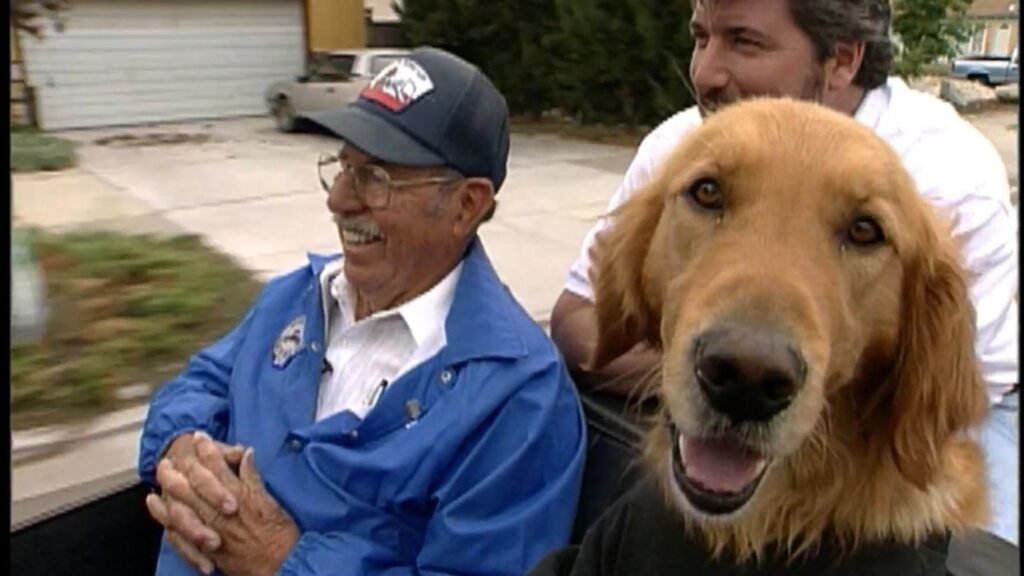Have you ever thought about how remarkable it would be if dogs could drive cars? It sounds like a playful concept, but what if such an idea could genuinely help abandoned dogs find loving homes?

This image is property of www.good.is.
Teaching Purpose: An Innovative Campaign
The campaign aiming to teach abandoned dogs in New Zealand to drive cars is more than just a quirky idea; it’s a heartfelt initiative designed to increase the chances of these dogs finding their forever homes. The New Zealand SPCA (Society for the Prevention of Cruelty to Animals) launched this project not only to showcase the dogs’ intelligence but also to create a memorable and impactful way to shine a light on the adoption process.
The Vision Behind the Initiative
The driving force behind this campaign is clear: to bring attention to the plight of abandoned dogs and show their potential in a unique way. Traditional adoption methods often struggle to capture the public’s attention, but combining training with an imaginative twist can spark interest and compassion. Dogs are already beloved companions, and this initiative highlights their capabilities and adaptability.
Who’s Behind the Wheel?
The New Zealand SPCA
The New Zealand SPCA played a pivotal role in the development of this campaign. They have long been advocates for animal welfare, focusing on educating the public about responsible pet ownership and encouraging adoptions. Their commitment to improving the lives of abandoned animals is commendable, making them a credible and vital organization in this innovative campaign.
Meet Mark Vette: The Training Expert
A crucial figure in this project is expert dog trainer Mark Vette. With years of experience in animal training, he possesses the skills and knowledge to turn this ambitious dream into reality. His approach focuses on positive reinforcement, ensuring that the dogs learn in a safe and supportive environment.
Training the Dogs to Drive
Innovative Training Techniques
The training process wasn’t just about getting the dogs behind the wheel; it involved developing specialized equipment to accommodate their unique capabilities. Mark Vette created a modified Mini Countryman, tailored specifically for dogs to operate.
This car had some custom features, allowing dogs to control the steering wheel and pedals in a safe manner. The modifications included strategically placed levers so that the dogs could reach essential controls without any danger.
Eight Weeks to Success
The training spanned an impressive eight weeks. Through consistency, patience, and, most importantly, positive reinforcement, these dogs learned to navigate the streets. Each session focused on building the dogs’ confidence and ensuring they felt comfortable in their unusual roles.
Regular exercises included:
- Basic Commands: Teaching dogs essential commands such as “sit,” “stay,” and “go.”
- Familiarization: Getting the dogs accustomed to the car environment, ensuring they were relaxed and focused.
- Controlled Driving: Teaching them how to maneuver the car safely while responding to commands.
The Importance of Positive Reinforcement
Positive reinforcement played a critical role in training. In simpler terms, this technique rewards good behavior, allowing dogs to connect their actions with positive outcomes. It fosters a relationship of trust and safety, crucial for their psychological well-being.
Dogs were awarded treats and praises every time they successfully completed a task. It transformed learning into an enjoyable experience, making the entire process more effective.
The Moment of Truth: Successful Demonstrations
After weeks of diligent training, it was time to showcase the dogs’ skills. The spotlight shined brightly when Porter and Monty took the stage for live television demonstrations. It was a remarkable moment that showcased their abilities and, more importantly, highlighted their personalities to potential adopters.
Building Excitement on Live Television
The demonstrations were designed not just to entertain but to inspire. As the cameras rolled, viewers witnessed firsthand the incredible capabilities of these dogs. Seeing them drive was captivating and made the audience realize the potential of adopting a dog, especially one from a shelter.
Showcase of Abilities
While showcasing driving skills, both dogs demonstrated:
- Intelligence: Their ability to follow instructions and respond to commands was impressive.
- Playfulness: Their joy and enthusiasm created an inviting atmosphere, revealing their readiness for a loving home.
- Personality: Each dog had a unique character that captured hearts across the globe, making viewers realize how special these animals are.
The Impact of the Campaign
Global Attention
The campaign captured significant media attention, with coverage reaching over 200 million people globally. Such an extensive reach allowed the message of dog adoption to permeate different communities and cultures.
People were not just amused by the idea of dogs driving; they were inspired to consider adopting one.
A Surge in Adoption Interest
One data point stands out starkly: the campaign resulted in a staggering 590% increase in adoption interest. This dramatic upturn signifies the power of creativity when paired with a noble cause.
Potential adopters began viewing dogs in a new light—beyond their conventional roles as pets. Suddenly, they were perceived as intelligent, trainable companions capable of forming deep bonds with humans.
The Final Outcome
Thanks to this innovative campaign, the results were overwhelmingly positive. After the demonstrations were aired, every single dog at the SPCA found a loving home.
This transformation was heartwarming and gratifying, illustrating the compassionate nature within communities when provided with a fresh perspective.
Broader Implications
The campaign not only emphasized the importance of adopting shelter dogs but also inspired similar initiatives worldwide. It provides a blueprint for animal welfare organizations to think outside the box and attract new adopters creatively.
The Lessons Learned
The Power of Creativity
One major takeaway from this initiative is the power of creativity in advocacy. When striving to make a difference, don’t be afraid to try something unconventional. Embracing joyful and engaging methods can open doors to conversations you never thought possible.
Importance of Training
Training isn’t just for competitive purposes; it can play a pivotal role in preparing dogs for a loving home. Investing time in training fosters a sense of stability and trust, both for the dogs and their future families.
Community Engagement
This campaign highlights the importance of community engagement. Events and demonstrations bring people together, sparking discussions about animal welfare. Building a sense of community can lead to lasting change, as individuals rally to support a cause they care about.
Supporting Abandoned Dogs
Ways You Can Help
Now that you’ve learned about this incredible campaign and its outcomes, you may wonder how you can help support abandoned dogs in your area. There are numerous ways to make a positive impact:
- Adopt, Don’t Shop: Consider adopting a shelter dog instead of purchasing one from a breeder. There are countless dogs in need of loving homes.
- Volunteer: Many animal shelters rely on volunteers for various tasks, from walking dogs to helping with events.
- Spread the Word: Share the stories of the dogs in shelters on social media. Awareness can lead to more adoptions and better community support for animal welfare.
The Role of Community Support
Supporting local shelters goes beyond just adopting pets. It involves fostering a loving environment where animals can thrive until they find their forever homes. Encourage friends and family to think about responsible pet ownership, supporting material needs in shelters, and advocating for animal rights.
Become a Responsible Pet Owner
If you’ve welcomed a pet into your home, ensure that you’re a responsible owner. This includes regular vet visits, training, socialization, and providing a stable and loving environment.
Your commitment can make a world of difference for your pet and help them become well-adjusted family members.
Conclusion
Teaching dogs to drive may have seemed like an outlandish idea at first, but this campaign beautifully illustrates how creativity can lead to significant change. The New Zealand SPCA’s approach combines fun with purpose, enabling dogs to showcase their intelligence and charm.
By focusing on inventive ways to garner attention for abandoned animals, they’ve set a precedent for future initiatives aimed at raising awareness and driving adoption figures.
In a world filled with challenges, this campaign stands as a beacon of hope. It encourages compassionate action and reminds us that every effort counts in building a world where every animal finds a loving home.
Together, we can embrace creativity and compassion, bringing light to the lives of countless abandoned dogs ready to find their forever families.



